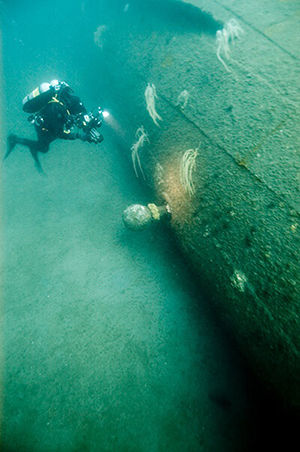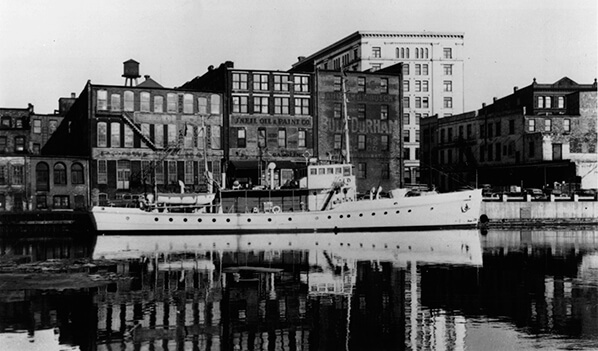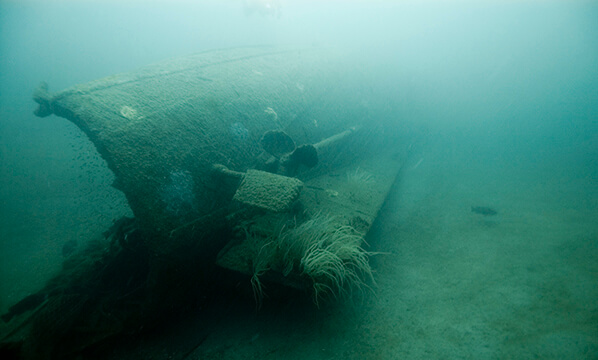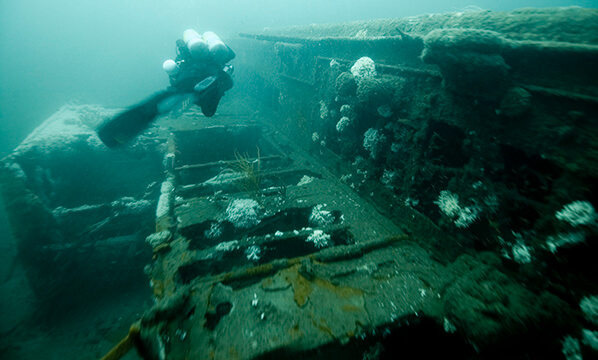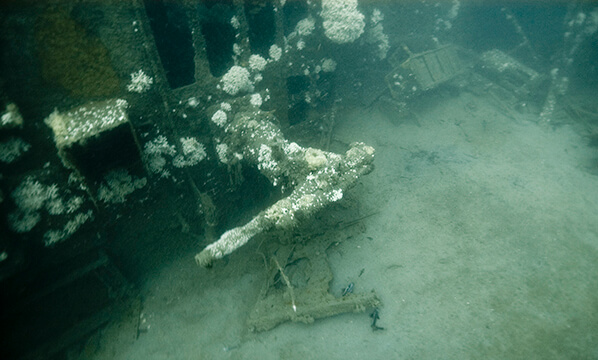USCGC Bedloe
Ship Stats
Depth: 140 feet
Vessel Type: U.S. Coast Guard Active Class Patrol Boat
Length: 125 feet Breadth: 23 feet 6 inches
Gross Tonnage: 232 tons Cargo: N/A
Built: American Brown Boveri Electric Company, Camden, New Jersey, and commissioned on
July 27, 1927
Hull Number: Unknown Port of Registry: Morehead City, North Carolina, USA
Owner: U.S. Coast Guard
Former Names: Antietam
Date Lost: September 14, 1944
Sunk By: Great Atlantic Hurricane Survivors: 12 of 38 (26 dead)
Data Collected on Site: High resolution multibeam sonar images and underwater photos
Significance: Served during World War II’s Battle of the Atlantic as a submarine chaser and patrol vessel. It sank in what became known as the Great Atlantic Hurricane of 1944 with the loss of 26 sailors.
Wreck Site
Resting in 140 feet of water, the wreck of USCGC Bedloe is impressive. The ship lays on its side almost fully intact. Some of Bedloe’s outer hull plates have fallen away, thus allowing divers using lights to see inside the hull and inside the intact pilot house. The forward deck gun remains in place and the shell boxes on the forward section near the gun still have intact shells inside. Although the ship went down with depth charges on board, there are none seen on the wreck site. It is believed that sometime after the ship sank, the U.S. Navy came and removed the depth charges. Today the wreck teems with marine life including sand tiger sharks, amberjacks, black sea bass, and tautogs. Visibility at the site can range between 20 and 40 feet, depending on the time of the year.
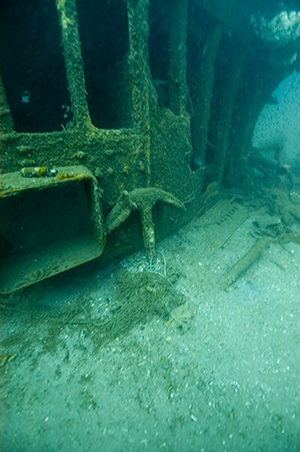
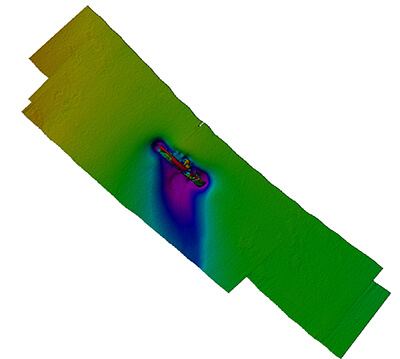
Historical Background
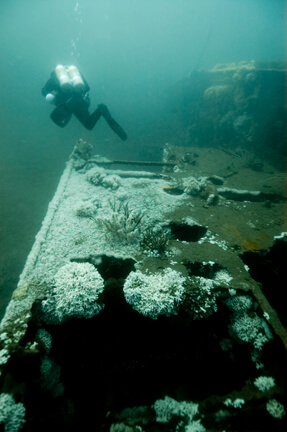
Like its sister ship, USCGC Jackson, Antietam was built by the American Brown Boveri Electric Company in Camden, New Jersey, and commissioned on July 27, 1927. Constructed at a cost of $63,173, Antietam was an Active-class vessel, designed for use during Prohibition. Its reputation for durability was enhanced by the re-engineering of the Active-class cutters in the late 1930s.
Initially stationed in Boston, Antietam was assigned to law enforcement and search and rescue duties. Transferred to Milwaukee, Wisconsin, the ship saw service on the Great Lakes before being sent to Hoboken, New Jersey, for an upgrade in armament. Subsequently assigned to EASTSEAFRON (Eastern Sea Front) and stationed in Staten Island, it saw service as a convoy escort vessel along the Eastern Seaboard. On March 9, 1942, Antietam rescued 16 survivors of the torpedoed tanker Gulftrade. The ship was renamed Bedloe on June 1, 1943.
In the second week of September 1944, the Great Atlantic Hurricane made its presence known, reaching peak strength just south of North Carolina. As the hurricane brewed, Bedloe and its sister ship Jackson were ordered to aid the merchant vessel George Ade, which had been disabled by a torpedo attack. In the pre-dawn hours of September 14, 1944, Jackson and Bedloe both received storm warnings. By dawn, conditions worsened, with seas as high as 50 feet. The crew prepared for heavier weather, battening down hatches and disarming depth charges. By 9:00 a.m., conditions became severe. George Ade sent out an SOS, but neither cutter was able to respond.
By 10:00 a.m., winds were believed to be over 100 miles per hour. Huge waves, described by eyewitnesses as over 100 feet high, battered Jackson and Bedloe. After battling the waves for hours, Bedloe capsized around 1:00 pm.
All of the crew and officers escaped into life rafts as the ship was sinking, but they were forced to endure the monstrous waves and high winds for hours, and then endured subsequent hours of exposure to the sun. Ironically, the crews of both Jackson and Bedloe, each unaware of the terrible fate that had befallen the other ship, awaited rescue from the other. Finally, Bedloe’s surviving crew was rescued by a U.S. Navy minesweeper some 51 hours after Bedloe slipped beneath the waves. Only 12 crew members survived.

